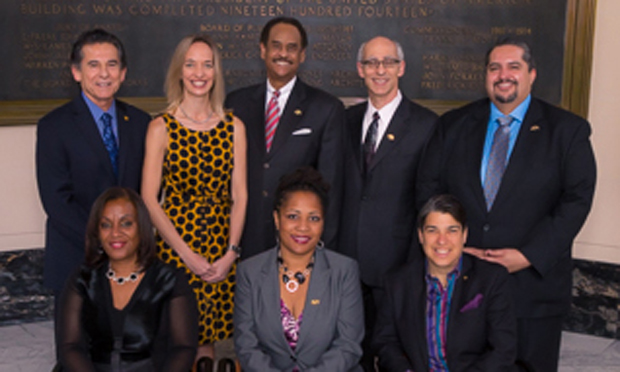
Bilingual employment policies might hurt African Americans and white people. A new study suggests the proportion of government employees who were black or white and spoke only English fell after a major California city adopted such a policy.
The issue: As U.S. communities become increasingly diverse, local governments have begun printing their forms, brochures and other materials in multiple languages. Some governments have gone further, hiring bilingual employees to help residents with limited English skills access public services.
Oakland, California was among the first American cities to adopt a bilingual employment policy for its administration. In 2001, the City Council adopted the Equal Access to Services ordinance, which requires key departments to provide the same level of service to individuals who speak one of the area’s dominant minority languages as they provide to English speakers.
Nationally, a number of organizations, including U.S. English, a citizens’ action group, oppose government efforts to offer assistance in more than one language. In 2009, the California NAACP spoke out against Oakland’s employment policy, contending that it pits ethnic groups against one another and reduces employment opportunities for individuals who only speak English.
An academic study worth reading: “The (Unintended) Consequences of Bilingual Employment Policies: Ethnoraciality and Labor Market Segmentation in Alameda County, CA,” published in the Du Bois Review: Social Science Research on Race, 2017.
Study summary: Abigail A. Sewell, an assistant professor of sociology at Emory University, looks at how Oakland’s bilingual employment policy impacted the labor market in the county where Oakland is located. Sewell analyzes data collected from several sources, including the U.S. Census and the 2005–2011 American Community Survey. Her study focuses on adults aged 18 to 59 who worked in targeted occupations in Alameda County between 2000 and 2011. She specifically examines changes in the racial and ethnic makeup of the county’s 69,277 government workers.
Key takeaways:
- After Oakland implemented its bilingual employment policy, fewer black and white people who only spoke English worked for government agencies in Alameda County. In 2000 – the year before the policy was adopted — 10.6 percent of government workers were black monolinguals. That proportion fell to an estimated 8 percent by 2011. The proportion of white monolinguals dropped from 47.5 percent in 2000 to an estimated 42.2 percent between 2005 and 2011.
- The proportion of bilingual government employees who spoke Spanish and English or Chinese and English grew from a combined 17.9 percent to a combined 21.2 percent. The proportion of government workers in Alameda who were bilingual in other languages rose from 14.7 percent to 17.5 percent.
- The proportion of government workers who were Latino and only spoke English increased slightly – from 5 percent to 5.2 percent — but the difference is not statistically significant.
- The proportion of government employees who were Asian or Pacific Islander and only spoke English rose from 4.3 percent to 5.8 percent.
- This study “suggests that language-based policies may have racialized effects on the employability of ethnoracial groups marginalized by monolingualism. For instance, this study clearly shows that Asian monolinguals benefited from multicultural policies focused on language, while Black monolinguals did not.”
Other resources for journalists:
- A 2015 report from the Pew Research Center suggests most English-speaking Hispanics in the U.S. are bilingual.
- A 2015 report from the U.S. Census Bureau offers a detailed look at the languages people speak at home in the U.S. In the Houston metropolitan area, for example, 37 percent of the population aged 5 and older speaks a language other than English at home.
- The National Center for Education Statistics offers a number of reports on public school students who are learning English as a second language. In 2013-14, 4.5 million public school students were learning to speak English, up from 4.2 million in 2003-04.
Related research:
- A 2016 study published in the American Journal of Political Science, “Voting Rights for Whom? Examining the Effects of the Voting Rights Act on Latino Political Incorporation,” finds that federal language-assistance provisions have helped more Latinos get elected to local school boards.
- A 2014 study in the Annual Review of Sociology, “Immigrants and African Americans,” takes a broad look at how immigration trends have affected black people in the U.S.
- A 2007 study in the Du Bois Review: Social Science Research on Race, “Immigration and the Future of Black Power in U.S. Cities,” explores “the barriers to effective coalition building between native-born African Americans and their immigrant counterparts.”
